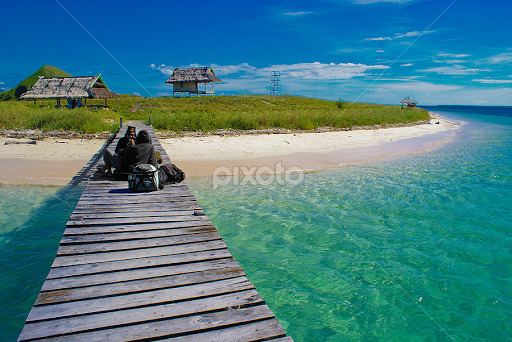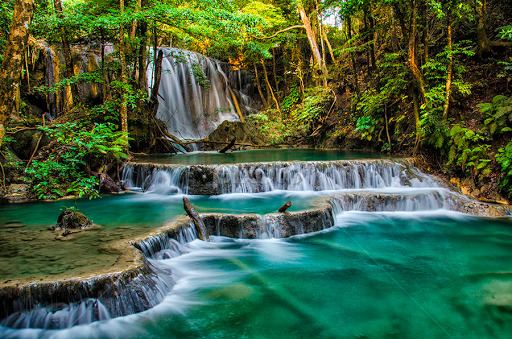Area 15,448 km² | ||
 | ||
Map of Sumbawa
Sumbawa is an Indonesian island, in the middle of the Lesser Sunda Islands chain, with Lombok to the west, Flores to the east, and Sumba further to the southeast. It is part of the province of West Nusa Tenggara, but there are presently steps being taken by the Indonesian government to turn the island into a separate province. Traditionally the island is known as the source of sappanwood used to make red dye, as well as honey and sandalwood. Its savanna-like climate and vast grassland is used to breed horses and cattle and to hunt deer.
Contents
- Map of Sumbawa
- Holiday is lombok sumbawa
- Sumbawa island culture indonesia by asiatravel com
- History
- Administration
- Demographics
- Geography
- List of offshore islands
- Volcanoes
- Economy
- Newmont Mine
- Transport
- References

Sumbawa has an area (including minor offshore islands) of 15,448 square kilometres or 5,965 square miles (three times the size of Lombok) with a current population (January 2014) of around 1.39 million. It marks the boundary between the islands to the west, which were influenced by religion and culture spreading from India, and the region to the east that was less influenced. In particular this applies to both Hinduism and Islam.

Holiday is lombok sumbawa
Sumbawa island culture indonesia by asiatravel com
History

The 14th-century Nagarakretagama mentioned several principalities identified to be on Sumbawa; Dompu, Bima, Sape and Sang Hyang Api volcanic island just offcoast of northeast Sumbawa. Four principalities in western Sumbawa were dependencies of the Majapahit Empire of eastern Java. Because of Sumbawa's natural resources, it was regularly invaded by outside forces – from Javanese, Balinese, Makassarese, Dutch and Japanese. The Dutch first arrived in 1605, but did not effectively rule Sumbawa until the early 20th century.
The Balinese kingdom of Gelgel ruled western Sumbawa for a short period as well. The eastern parts of the island were also home to the Sultanate of Bima, an Islamic polity that had links to Bugis and Makasarese people of South Sulawesi, as well as other Malay-Islamic polities in the archipelago.
Historical evidence indicates that people on Sumbawa island were known in the East Indies for their honey, horses, sappan wood for producing red dye, and sandalwood used for incense and medications. The area was thought to be highly productive agriculturally. In the 18th century the Dutch introduced coffee plantation on the western slopes of Mount Tambora, thus creating the Tambora coffee variant.
Administration
Sumbawa is administratively divided into four regencies (kabupaten) and one kota (city). They are:
Demographics
Islam was introduced via the Makassarese language of Sulawesi island.
Sumbawa has historically had two major linguistic groups who spoke languages that were unintelligible to each other. One group centered in the western side of the island speaks Basa Semawa (Indonesian: Bahasa Sumbawa) which is similar to the Sasak language from Lombok; the second group in the east speaks Nggahi Mbojo (Bahasa Bima). They were once separated by the Tambora culture, which spoke a language related to neither. After the demise of Tambora, the kingdoms located in Sumbawa Besar and Bima were the two focal points of Sumbawa. This division of the island into two parts remains today; Sumbawa Besar and Bima are the two largest towns on the island, and are the centers of distinct cultural groups that share the island.
The population of the island (including minor outliers) was 1.33 million at the latest decennial census in 2010, comprising 29.58% of the population of the entire province's with 4.5 million people. Due to lack of work opportunities on the island and its frequent droughts (unlike wet Bali), many people on the island seek work in the Middle East as laborers or domestic servants; some 500,000 workers, or over 10% of the population of West Nusa Tenggara, have left the country to work overseas.
Geography
The island is bound by bodies of water; to the west is Alas Strait, south is the Indian Ocean, Saleh Bay creates a major north-central indentation in the island, and the Flores Sea runs the length of the northern coastline. The Sape Strait lies to the east of the island and separates Sumbawa from Flores and the Komodo Islands, there are a number bays and gulfs, most notably Bima Bay, Cempi Bay, and Waworada Bay
Sumbawa's most distinguishing feature is Saleh Bay and the Tambora Peninsula with Mount Tambora. Highlands rise in four spots on the island, as well as on Sangeang Island, the large western lobe of Sumbawa is dominated by a large central highland, there is Mt. Tambora, Dompu and Bima each have more minor highlands.
There are a number of large surrounding islands, most notably are Moyo Island, volcanically active Sangeang Island, and the tourist Komodo Islands (administered under Flores) to the east.
List of offshore islands
There are a number of smaller offshore islands which fall within the regencies based on Sumbawa Island:
Volcanoes
Sumbawa lies within the Pacific Ring of Fire. It is a volcanic island, including Mount Tambora (8°14’41”S, 117°59’35”E) which exploded in April 1815, the most destructive volcanic eruption in modern history (roughly four times larger than the 1883 eruption of Krakatoa, between Java and Sumatra, in terms of volume of magma ejected). The eruption killed as many as 72,000. It also apparently destroyed a small culture of Southeast Asian affinity, known to archaeologists as the Tambora culture. It launched 100 cubic kilometres (24 cu mi) of ash into the upper atmosphere, which caused 1816 to be the "year without a summer". [2]
Economy
Many of the island residents are at risk of starvation when crops fail due to lack of rainfall. The majority of the population works in agriculture. Tourism is very nascent, with a few surf spots renowned for being world class, Jelenga and Supersuck Beaches near the mine, as well as Hu'u and Lakey Beach in the Gulf of Cempi.
Due to the mine, Sumbawa Barat Regency (statistically), along with other remote mining towns, and Jakarta, have the highest GDP per capita rates in Indonesia, Sumbawa Barat's is 156.25 million rupiah ($17,170 USD) as of 2010, yet it is an area that sees entrenched, repeated starvation deaths and severe malnutrition in children.
Newmont Mine
The Southwestern extreme portion of Sumbawa is monopolized by American firm Newmont Mining Corporation; a large gold and copper mine, Newmont's Batu Hijau mine in Sumbawa began commercial operations in 2000, a decade after the copper and gold were discovered. Newmont holds a 45% stake in the operation through its shareholding in PT Newmont Nusa Tenggara. A local unit of Japan's Sumitomo Corporation has a 35% share.
Newmont and its partners have invested about $1.9 billion in the mine. The reserves are expected to last until 2034, making Batu Hijau one of the largest copper mines in the world.
Newmont has been accused of being involved in scandals of mercury and arsenic poisoning in Sulawesi Island, as well as having been embroiled in pollution cases on four continents. Protests on Sumbawa where police fired on protesters of a different gold project did not involve Newmont operations.
Transport
There is a road network in Sumbawa, but it is poorly maintained and has long portions of rough gravel. Frequent ferry service to Sumbawa (Poto Tano) from Lombok (Labuhan Lombok) exists, however ferry service to Flores from Sape is infrequent. Bima is the largest city on Sumbawa and has ferry and bus service directly to Java and Bali, though service breakdowns are common.
